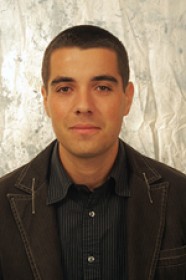
2:00 pm to 12:00 am
Event Location: NSH 1305
Abstract: Given a desired function for an effector, what is its appropriate shape? This thesis addresses the problem of designing the shape of a rigid end effector to perform a given manipulation task. It presents three main contributions: First, it describes the kinematics of an effector as the combination of both its shape and its motion, and assuming a fixed motion model, it explores the role of shape in satisfying a certain manipulation task. Second, it formulates that task as a set of constraints on the geometry of contact between the effector and the world. Third, it develops tools for transforming those constraints into an effector shape for general 1DOF planar and spatial mechanisms, and discusses the generalization to mechanisms with more than one degree of freedom.
We illustrate its application to the case studies of designing the phalanges of grippers that yield invariant grasp geometry, grippers with improved grasp stability, and grippers with extended grasp versatility. We further showcase the technique with the design of the fingers of the MLab hand, a three-fingered gripper actuated with a single motor, capable of exerting any combination of geometrically correct enveloping and fingertip grasps on spherical, cylindrical, and prismatic objects of varying size.
Committee:Matthew T. Mason, Chair
Howie Choset
Siddhartha Srinivasa
Vijay Kumar, University of Pittsburgh
